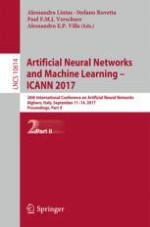The two volume set, LNCS 10613 and 10614, constitutes the proceedings of then 26th International Conference on Artificial Neural Networks, ICANN 2017, held in Alghero, Italy, in September 2017.
The 128 full papers included in this volume were carefully reviewed and selected from 270 submissions. They were organized in topical sections named: From Perception to Action; From Neurons to Networks; Brain Imaging; Recurrent Neural Networks; Neuromorphic Hardware; Brain Topology and Dynamics; Neural Networks Meet Natural and Environmental Sciences; Convolutional Neural Networks; Games and Strategy; Representation and Classification; Clustering; Learning from Data Streams and Time Series; Image Processing and Medical Applications; Advances in Machine Learning.
There are 63 short paper abstracts that are included in the back matter of the volume.
